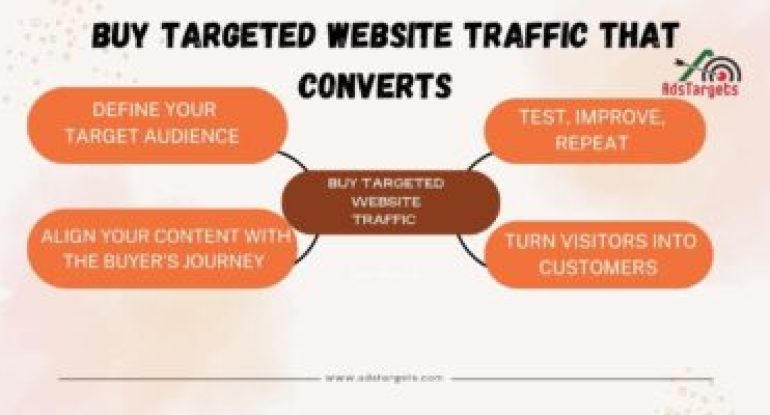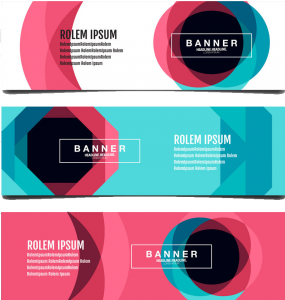Every single minute online is a crazy rush. Around 500 hours of videos get uploaded to YouTube, Instagram sees 695,000 new stories, and over 70 million messages fly across the internet. With all that noise, every business is fighting tooth and nail just to get noticed.
So, how do you stand out and actually get people to your site? One smart way is to buy targeted website traffic — not just random visitors, but people who are already likely to be interested in what you’re offering. It might sound simple: pay, run some ads, and boom — your site is buzzing with clicks. But the truth is, every ad space is like a mini battlefield where you’re competing with other advertisers, the page content itself, and even the short attention spans of your audience.
In this guide, we’ll break down exactly how to buy targeted website traffic the right way, how to stretch every dollar you spend, and which winning practices can help you beat the competition without burning through your budget. Think of it as your playbook for turning clicks into real customers.
Table of Contents
ToggleWhat Does Buying Traffic Really Mean?

In simple terms, buying traffic is just paying to get people to visit your website or app. Instead of sitting around and hoping they find you through Google search or social media, you put some money into ads that show up in front of the right people. When someone clicks the ad and lands on your site — boom, that’s a paid visit.
The smart way to do this is by aiming for targeted website traffic. That means you’re not just pulling in random visitors, but people who are actually interested in what you sell — based on their searches, hobbies, or even where they live. The biggest perk? It’s fast. You can start seeing visitors roll in within minutes, whether you’re trying to sell more products, grow your email list, or get the word out about something new.
The tricky part is making sure you buy those visits wisely. You want your money bringing in targeted website traffic that’s more likely to stick around, click, and convert — not just passersby who vanish after a few seconds.
Tips for Buying High-Converting Traffic

Buying targeted website traffic might sound like a walk in the park, but if you go in without a plan, you could end up burning through your budget and getting little (or nothing) in return. The trick is to prepare ahead of time and keep refining your approach. Here’s where to start.
#1. DEFINE YOUR TARGET AUDIENCE
You’ve got two choices:
Blast your ads to everyone on the internet, spend a fortune, and get only a few visitors.
Or focus your ads on a smaller group of people who are already likely to be interested in what you offer — which costs less and brings in more conversions.
The second option wins every time because it’s smarter, cheaper, and way more effective. That’s what buying targeted website traffic is all about — reaching the right people, not just more people.
When defining your audience, think about:
Gender
Age
Location
Job title
Spending habits
Preferred communication channels
Interests
It also helps to create a target audience persona — basically a clear picture of your ideal visitor, what they care about, and how they’re likely to respond to your offer. This makes your ad targeting sharper, your traffic more relevant, and your results more consistent.
Finding Out Who Isn’t Your Target Audience
Knowing your audience is important — but knowing who isn’t your audience is just as valuable. This isn’t just about the total opposite of your ideal customer. Sometimes, there are people who seem close to your target audience in terms of age, location, or interests, but still won’t have any real interest in your product or service.
By figuring this out early, you can make your ads more appealing to the right people and avoid wasting money on clicks that won’t convert. It also allows you to use ad network targeting features to their full potential, making sure your budget goes toward targeted website traffic that actually matters.
For example, one company nailed down exactly who they wanted to reach before running display ads on an ad platform. Using that insight, they were able to buy targeted website traffic through real-time bidding (RTB) auctions — getting quality clicks quickly, and without overspending.
Another bonus? Most ad platforms let you track your campaigns in real time. That means you can see which audiences are responding, make changes on the fly, and improve your results as you go.
#2. ALIGN YOUR CONTENT WITH THE BUYER’S JOURNEY

Before someone buys from you, they usually go through a few clear steps. If you want to win them over, you need to match your content to where they are in that journey — and guide them smoothly from “just looking” to “take my money!” The right approach not only builds trust but also helps you attract and convert targeted website traffic at every stage.
#1. Awareness & Discovery Stage
Here, people realize they have a problem but aren’t ready to buy yet. They’re searching for answers, tips, and ideas — not products. This is your chance to be helpful. Share educational content like guides, how-tos, checklists, and explainer videos. Use broad keywords like “How to…,” or “What to do if…,” so you reach a wider audience and start pulling in early-stage targeted website traffic.
#2. Consideration Stage
Now they know the type of solution they need and are comparing products or services. They’re digging deeper into features, benefits, and brand differences. To stand out, create landing pages with crystal-clear descriptions, engaging videos, strong calls-to-action (CTAs), and even case studies for B2B buyers. This stage is about convincing them you’re the best option on the table.
#3. Purchase Stage
They’ve done their homework and are ready to buy. This is where you focus on sealing the deal. Highlight your prices, benefits, ratings, and promotions. Make the buying process simple — use clear CTAs like “Shop Now,” “Sign Up,” or “Get a Demo.” Commercial intent keywords work best here, like “Buy … in [city]” or “… review.” Shopping ads with product images, prices, and reviews can give you that final push.
Pro Tip: Don’t only advertise to people at the last stage. If they’ve seen your brand from the start, you’ll already feel familiar and trustworthy when it’s decision time — which gives you a big edge over the competition.
Key Metrics to Measure Traffic Quality
So you’ve run your ads across different channels — maybe affiliate marketing, social media, paid campaigns — and the impressions are rolling in. It looks like you’re doing great. But here’s the real question: is that traffic actually good for your business? Numbers alone can be misleading. To know for sure, you need to measure the quality of your results — especially if you’re investing in targeted website traffic.
Tracking these key metrics will tell you if you’re reaching the right people and getting real value from your ad spend.
#1. Bounce Rate
This shows the percentage of visitors who leave your site after viewing just one page, without clicking anything else. A high bounce rate (70% or more) usually means something’s off — maybe the landing page is irrelevant, the content is weak, the offer is unclear, or the price scares them away. If your targeted website traffic is bouncing quickly, you may need to adjust your message or targeting.
#2. Session Duration
This tells you how long visitors stay on your site after they land. If they leave within a few seconds, they probably didn’t find what they expected (or they clicked your ad by mistake). Longer session times usually mean your content is engaging and relevant to your audience.
#3. Conversion Rate (CR)
Conversion rate measures how many visitors take the action you want — like buying something, signing up, or filling out a form. For example, if 10,000 people visit and 300 convert, your CR is 3%. A low CR means people are arriving but not taking action, which often points to issues with your landing page, offer, or sales funnel.
#4. ROAS (Return on Ad Spend)
ROAS tells you how much money you earn for every dollar spent on ads. If you spend $100 and make $400, your ROAS is 4 — meaning you made four times your investment. Low ROAS means you might be targeting the wrong audience or your offer isn’t compelling enough. High ROAS means your ads and targeting are working like a charm.
#5. Cost Per Conversion (CPC)
This measures how much you spend to get one person to take the desired action (purchase, sign-up, download, etc.). A lower CPC means you’re getting more results for your money. A high CPC means you might need to improve your targeting, ad creative, or landing page to be more efficient.
Bottom line: Tracking these metrics regularly will help you see whether your targeted website traffic is bringing you the right kind of visitors — the ones who engage, convert, and help your business grow.
The Dangers of Buying Low-Quality Traffic

Not all traffic is created equal. If you’re spending money on clicks and impressions from shady or irrelevant sources, you could be doing more harm than good. Instead of helping you grow, low-quality traffic can drain your budget, mess up your analytics, and even hurt your brand’s reputation. This is why it’s so important to focus on targeted website traffic that comes from trusted, relevant sources.
Here are the main risks of going the cheap, low-quality route:
#1. Low Conversion Rates – Visitors from bad sources are unlikely to buy, sign up, or take any action you want. Your conversion numbers will suffer.
#2. High Bounce Rates – These users often leave your site within seconds, without clicking anything.
#3. Wasted Ad Spend – You’re paying for visits that give you nothing in return, draining your ad budget.
#4. Skewed Analytics – Fake clicks or irrelevant traffic can mess up your data, making it harder to know what’s actually working.
#5. Poor Audience Targeting – If your targeting is off, your ads reach people who have no interest in what you offer.
#6. Lower ROI – Since these visitors don’t convert, your return on ad spend (ROAS) drops, making your campaigns less profitable.
On top of that, you risk your ads appearing next to inappropriate or shady content, or being inflated by bot activity. That’s not just bad for your numbers — it can damage your brand’s image.
Pro Tip: Always choose platforms that work with fraud detection and prevention tools. This way, you protect your investment and ensure your budget is going toward genuine, high-quality, targeted website traffic that actually moves the needle.
#3. TEST, IMPROVE, REPEAT
If you want to buy targeted website traffic that actually turns into sales, you’ve got to stay flexible. Running the same ad over and over just because it looked good on paper is a sure way to waste money or get the smallest possible results.
Watch your numbers—your KPIs (key performance indicators)—like a hawk. They’ll tell you exactly what needs a tune-up:
Your audience targeting
The pictures or videos in your ad
Your ad text
Your landing page
Even the time of day you run the ad
If a channel is only burning your budget without results, cut it. If a keyword is too expensive and doesn’t bring sales, drop it. If a certain time of day costs more but doesn’t perform, pause it.
Testing is your best friend. Try different ad images, calls-to-action (CTAs), audience segments, and even colors or words. You might discover a sweet spot your competitors haven’t noticed yet. A/B testing (where you compare two versions to see which works best) can show you the fastest, most profitable way to get high-converting traffic to your site.
#4. TURN VISITORS INTO CUSTOMERS
Getting targeted website traffic is only step one. Step two? Making sure those clicks turn into real customers.
Think of your website as part of your ad. If your ad is exciting but your site looks messy, slow, or confusing, people will leave before they buy. Make sure your site is:
Clean and easy to navigate
Works perfectly on phones, tablets, and computers
Has a landing page that matches the style and promise of your ad
Makes buying quick and simple
Don’t Forget Email Marketing
Not everyone buys on the first visit. That’s why you should collect emails and keep in touch. Here are easy ways to do it:
Offer special content only for newsletter subscribers
Give early access to sales or coupons
Share helpful freebies like eBooks, checklists, or guides
Show previews of your newsletter on social media
Use an attractive popup with a clear offer
Once you have their email, send useful content, reminders, and offers to build trust and keep your brand fresh in their mind.
When your ads, landing pages, and email marketing work together, you’ll get better returns on every ad dollar spent—and your cost per customer will drop big time.
Where to Buy High-Converting Traffic?
So, where can you actually find that magical, high-converting traffic? The kind where visitors don’t just click and leave—they stick around, explore, and maybe even buy something? Let’s break down some of the best platforms for running campaigns that bring in real, targeted website traffic.
#1. Google Ads
Google is everywhere. With 5.4 billion searches happening every single day, there’s a good chance your audience is already looking for something you offer. The magic of Google Ads is in its keyword targeting—you can show ads only to people who are already searching for things in your industry.
It runs on a PPC (pay-per-click) model, so you only pay when someone clicks. Done right, this can bring in very high-quality traffic. Done wrong, it can drain your budget with clicks from people who have zero interest in your offer.
#2. Facebook Ads
Want to reach billions of people scrolling through Facebook, Instagram, or Messenger? Facebook Ads makes that possible. You can target by age, location, language, interests, and even behaviors—like showing your ad to fans of your competitors.
The best part? The ads blend in with regular posts, so they don’t annoy users as much as pop-ups. You can pay for clicks or impressions and set daily or campaign-wide budgets.
#4. Adcash
Adcash is an ad network that covers 196 countries and offers multiple ad formats: pop-unders, banners, push notifications, native ads, and full-screen interstitials. The cool thing? It has built-in ad fraud protection and tools to bypass ad blockers, so your campaigns can reach more real people.
You can target by location, device, IP, timezone, and more, and pay either per click or per mille.
#5. Adsterra
Adsterra works with over 18,000 direct publishers and delivers 1 billion impressions daily. You can fine-tune your targeting by device, OS, browser, location, language, and even connection type (Wi-Fi vs. mobile data).
It offers classic formats like banners, push notifications, videos, and native ads, plus a special Social Bar with interactive ad options. You can choose from several pricing models—CPM, CPC, CPA, CPL, or CPI—depending on your campaign goals.
How to Avoid Bot Traffic and Get Real Visitors?
Let’s be honest — bot traffic is a total waste of time and money. These are fake “visitors” that aren’t even human. They don’t read your content, they don’t buy your products, and they certainly don’t care about your brand. Some bots are even worse — they steal your content, spam your site, or hunt for security holes.
Why does it happen? Because for shady website owners, using bots is the fastest, cheapest, and easiest way to fake traffic numbers and make quick money. But for you as an advertiser, it’s like paying for thin air — zero value, zero sales, just empty numbers.
Conclusion
Getting high-converting traffic isn’t rocket science — you just need to know where to find it and how to check if it’s actually working for you. The real magic happens when you clearly define your target audience, match your ads to their buying journey, and choose an ad platform that works best for your goals. Then, it’s all about testing, tweaking, and optimizing until you’re getting the results you want.
The five platforms we’ve covered are some of the best ways to buy targeted website traffic that’s more likely to convert into sales, sign-ups, or loyal fans.








